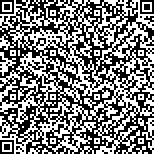Archive > Volume 37 Issue 9 > 2011,37(9):1140-1144. DOI:10.7519/j.issn.1000-0526.2011.9.011 Prev Next
Discussion on Biological and Meteorological Factors and Single Late Rice Stripe Disease
- Article
- Figures
- Metrics
- Preview PDF
- Reference
- Related
- Cited by
- Materials
Abstract:
In order to provide the technological basis for the agrometeorological forecast of single late rice stripe disease, the data of 95 samples of transplanting rice and direct seeding rice in 10 counties in 2007-2008 and meteorological materials in the same period and counties were analyzed using the applied mathematical statistics method. The result showed that under the condition of rice stripe virus (RSV), the primary factor of affecting the occurring of single late rice stripe disease was rice variety, and the partial correlation coefficient between resistant capability and diseased plant rate was -0.622 (P<0.01). The secondary factor was average relative humidity from seeded or transplanted to seven leaf age, and the partial correlation coefficient with which and diseased plant rate was -0.293 (P<0.01). The affecting from sowed or transplanted date of rice to single late rice stripe disease was actually through average relative humidity from seeded or transplanted to seven leaf age to the breaking out of single late rice stripe disease. Partial correlation coefficients between sowingplanting period of rice and diseased plant rate, average relative humidity from seeded or transplanted to seven leaf age were -0.036 and 0.309 (P<0.01), separately. Therefore, in the operational forecast, the rice variety and relative humidity from seeding or transplanting to seven leaf age should be focused and considered.
Keywords:
Project Supported:
Clc Number:


Mobile website









